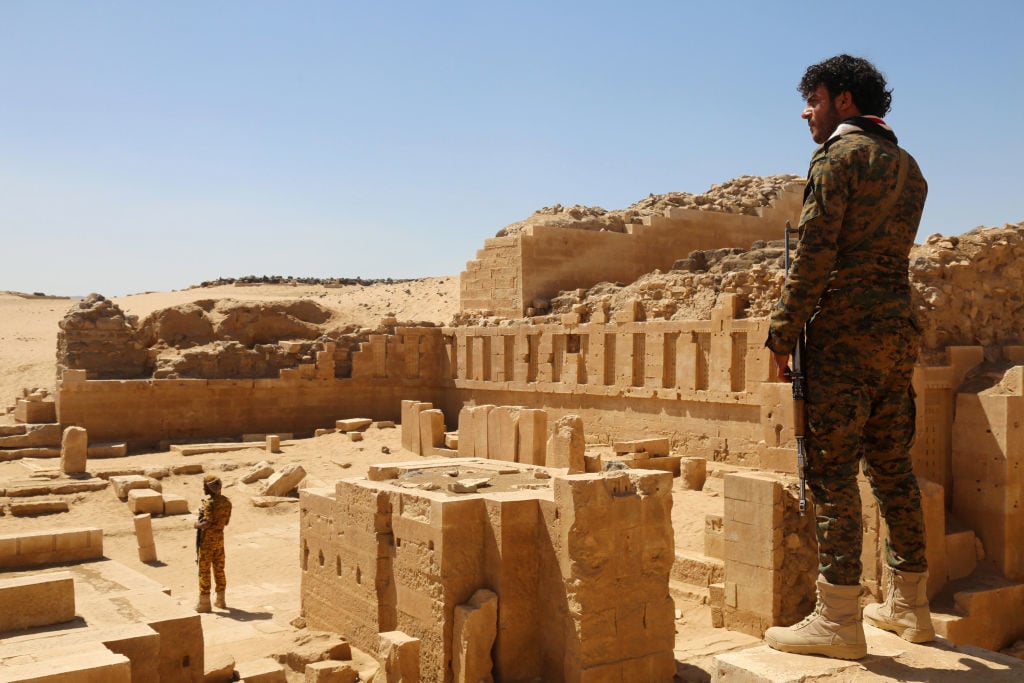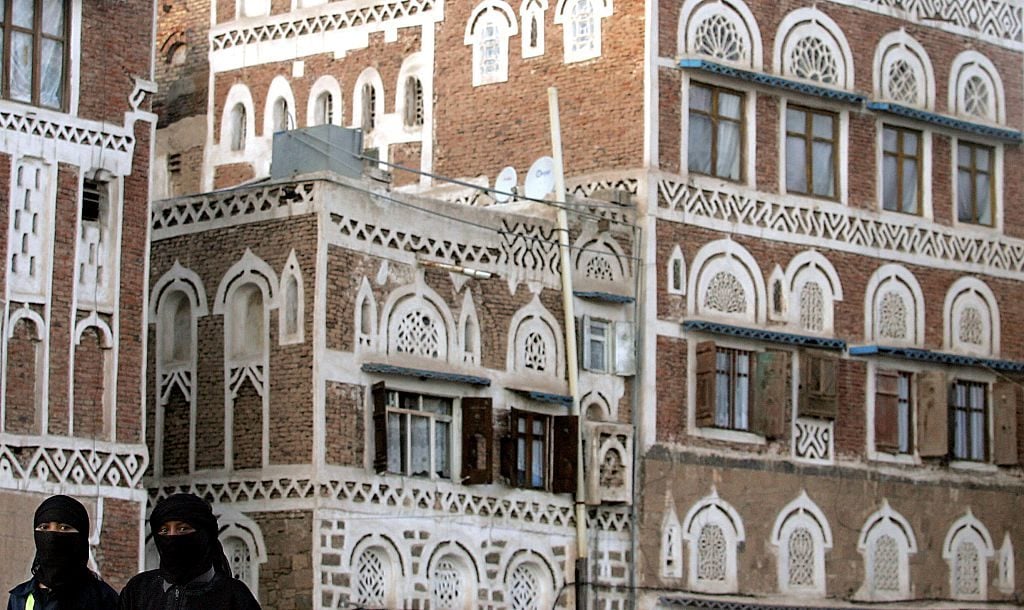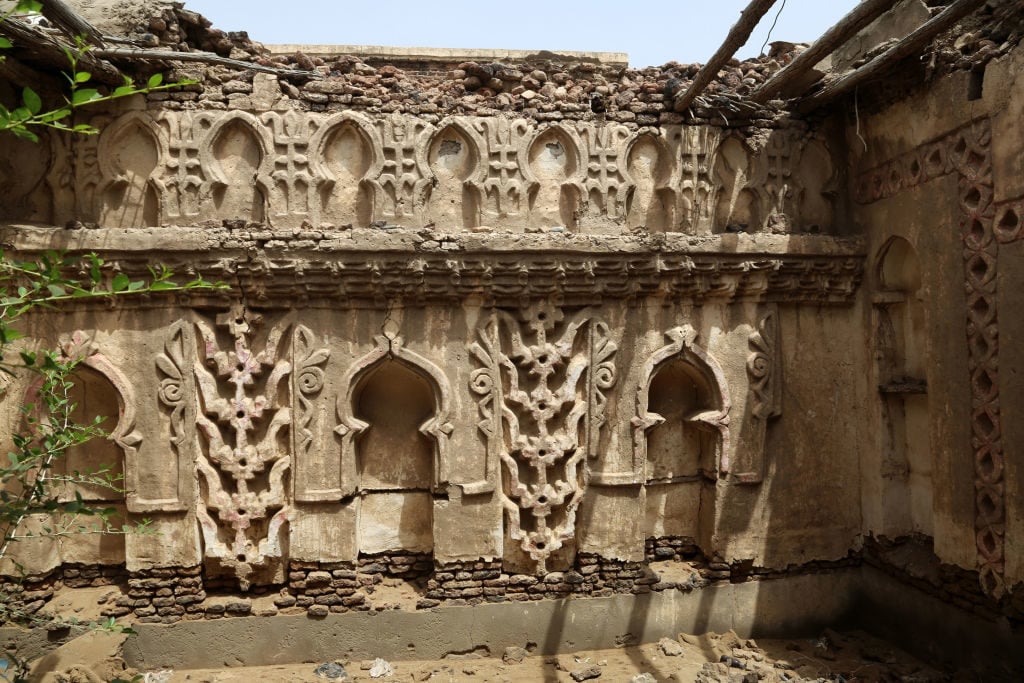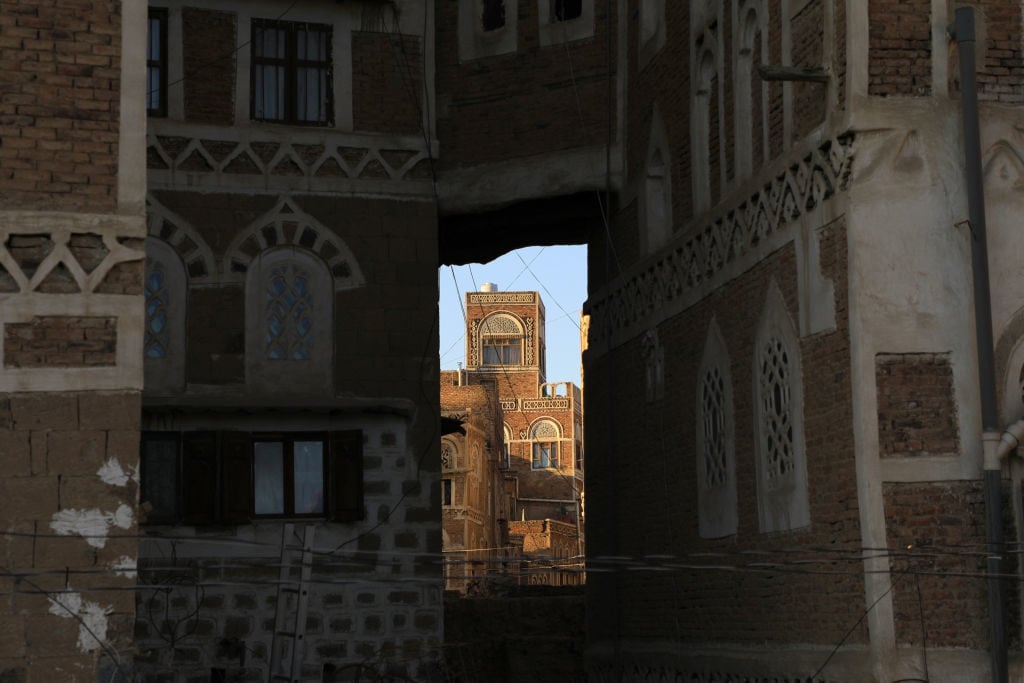Politics
A War on ‘Collective Memory’: A Sober Report Reveals the Extent of the Damage to War-Torn Cultural Sites in Yemen
The document demands that all parties involved in the conflict work to protect Yemen's important cultural heritage.

The document demands that all parties involved in the conflict work to protect Yemen's important cultural heritage.

A heart-wrenching new report has revealed the extent of the destruction of archeological sites and cultural heritage in war-torn Yemen. The human rights group behind the report is now calling on the international community to intervene in defense of Yemen’s imperiled “collective memory.”
The document, which was released last Thursday by the organization Mwatana for Human Rights, lists 34 sites—some up to 3,000 years old—that have suffered severe damage. Titled “The Degradation of History,” the survey is built on eyewitness reports from 75 people who were working at the heritage sites when they sustained attacks and airstrikes during the four-year-long conflict. Pointedly, the date of the report’s publication aligns with the 73rd anniversary of UNESCO, the international agency that seeks to preserve cultural heritage.
Historic buildings, monuments, and archeological sites have not been just collateral damage in the battle, but direct targets themselves. “Because these parties and affiliated armed groups also carry a hostile attitude toward history that is inconsistent with their ideology, many cultural properties have been destroyed in their areas of control,” the report states. “The destruction of historical monuments and artifacts and archeological and religious buildings is the main manifestation of the country’s descent into the abyss of a war without a resolution.”

Yemeni women walk past traditional buildings in Sanaa’s old city, 01 March 2006. (Photo: PATRICK BAZ/AFP/Getty Images)
The current conflict officially broke out March 2015, though the report has included documentation of damage going back to 2014, when Yemeni Houthi rebels first occupied much of the northern region. The report states that the Houthi rebel-led Supreme Political Council has reached a political stalemate with its opponents, the Hadi-led government and its Gulf region backers (including Saudi Arabia and the United Arab Emirates).
The assassination by Saudi Arabia of the journalist Jamal Khashoggi has brought renewed attention to the situation in Yemen and the Middle Eastern nation’s activities there. Meanwhile, the humanitarian crisis is deepening: in 2018, the United Nations confirmed that 13 million civilians are facing starvation and that the situation could become “the worst famine in the world in 100 years.”
Yemen was not always so vulnerable. Historically a cultural mecca and a powerful player in the Middle East, the country is a “cradle of one of the oldest civilizations known to man,” the report notes. Its authors conducted investigations throughout the country to examine the status of ancient historical and religious monuments, cities listed on the World Heritage List, and museums.

A picture taken on February 24, 2018 shows a view of the ancient city of Zabid, a UNESCO World Heritage Site currently on the list of World Heritage in danger, in Yemen’s western Hodeidah province. (Photo: ABDO HYDER/AFP/Getty Images)
Among the sites caught in the crossfire is the Kawkaban Fortress, a majestic mountaintop fortress that was to protect centuries-old homes known for their astounding architecture. In February 2016, the homes became mounds of rubble after they were hit by an airstrike from the Saudi-led coalition, according the Washington Post. (“Why is the world so quiet?” one museum worker asked the newspaper at the time.)
Fighting has also destroyed or badly harmed many historical buildings in Yemen’s ancient city of Sana’a, like the Al-Hadi Mosque, constructed around 897 and one of the region’s most important landmarks.
Also under fire is the Ma’rib dam, one of the world’s oldest feats of engineering. The massive structure dates to 8th century BC and is one of the ancient wonders of the world. But, as two eyewitnesses detail in the report, a Saudi airstrike profoundly damaged the marvel in spring 2015.

This picture shows a view of the old quarter of the capital Sanaa on November 14, 2018. (Photo: MOHAMMED HUWAIS/AFP/Getty Images)
“This situation gradually culminated with the targeting of tangible heritage (cultural objects), whether intentionally as a result of hostility towards it, or indifference to its historical value,” the authors state. The report calls for the international community to protect Yemeni cultural heritage, citing the 1954 Hague Convention, a treaty for the protection of cultural property during armed conflict that was formed after the extensive damage in Europe during World War II.
“Heritage,” the report’s authors state, “is a common human path.”